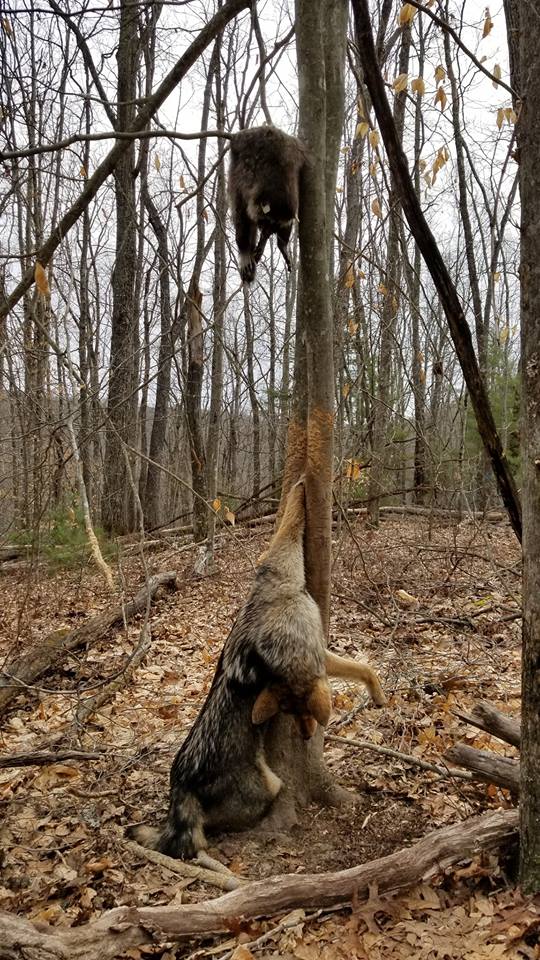(Photo by Adam Muise)
Raccoons are synonymous with urban life. Known throughout North America’s hunting and trapping community as a staple fur-bearing resource for their fur (and in some cases, meat), these furry masked bandits continue to adapt and thrive in the suburban-sprawl of human civilization.
As a newly released video report from Tech Insider suggests, the raccoon (Procyon lotor) continues to keep the wildlife control industry busy in almost every major city in North America.
According to the report, the city of Toronto spent $31 million in 2016 alone to address growing raccoon conflict.
Raccoon complaints in Brooklyn New York nearly doubled from 2014 to 2015, despite attempts by city staff to redeposit the trouble-making trash-pandas in forested portions of nearby Prospect Park.
Alas - any seasoned wildlife control operator will tell you a well-fed city-slicking raccoon will prefer the urban digs over forested fare any day!
Back in Toronto, the city came to terms with their raccoon population; and rather than try to trap and remove their furry guests, the city spent a considerable sum on specialized locking trash-can lids in hopes of restricting an easy food source for the wild invaders. It wasn’t long before the posable-thumbs and extensive reasoning of the local raccoon population thwarted the trash-can’s security lock; and the nightly buffets resumed.
Not surprising from an animal that has been known to have a neuron brain density comparable to primates.
The Tech Insider report also suggests that broad-scale removal from cities is futile, as studies have found populations rebound after mass removal.
With female raccoons ready to breed at just one year old, and able to produce as many as eight young each year - its easy to see why.
While “mass-culling” may not be feasible, studies have found that regulated management through seasonal hunting and trapping can limit broad-scale conflict.
This is why almost every state wildlife agency encourages regulated hunting and trapping seasons to manage thriving raccoon populations.
Of course, these activities seldom take place within the confines of the “concrete jungles” of major cities - leaving raccoon damage mitigation to the pest & wildlife control companies in these areas.
(Photo by Adam Muise)
City residents have cause for concern. Dense populations of raccoons all competing for limited resources typically leads to disease transmission; such as rabies, distemper and roundworm. It also means extensive damage to dwellings and living-spaces as a result of raccoons seeking solace and nursing dens within the insulation-laden walls of basements, garages and attics. The stereotypical sounds of wailing house cats echoing through the alleyways of city streets have been replaced with the sneering screams of heated ‘coons fighting over discarded Twinkies and Crab Rangoons.
The raccoon’s presence is felt in the conservation community as well, where wildlife managers rely heavily on fur trappers to reduce egg-raiding raccoon pressure on endangered nesting birds, and assist with density reduction in disease-laden swaths of the Northeast.
I’ve always been personally fascinated with the adaptability of fur bearers such as skunks and raccoons. In the aftermath of the raccoon’s “great migration” to man’s urban meccas, it’s almost hard to believe they ever inhabited the wildernesses of rural America at all - man was once a rural beast as well.
Much like those skillful urban raccoons, hunters and trappers will also adapt.
With the “boom” of ‘coon hunters in the 1970’s and 80’s well behind us, many modern-day raccoon trappers are finding themselves frequenting far fewer muddy sloughs of raccoon-rich creek banks and more attic spaces of residential cul-de-sacs.
With this in mind, rural fur trappers need not pack up their gear and head to the “big city” to mitigate raccoon complaints - studies have found an increase in raccoon presence correlated with increased damage to agricultural crops across rural America as well.
Those studies have also found that “sustained localized management of raccoon populations may decrease the amount of damage incurred to cornfields at local scales.”
Needless to say the most urban chic of all furbearers continues to keep licensed trappers, and city inhabitants busy - and amused!
The Insider’s video report can be viewed below in its entirety.
Read up on our other raccoon-related reports!










I’ve always been personally fascinated with the adaptability of fur bearers such as skunks and raccoons. In the aftermath of the raccoon’s “great migration” to man’s urban meccas, it’s almost hard to believe they ever inhabited the wildernesses of rural America at all - man was once a rural beast as well.